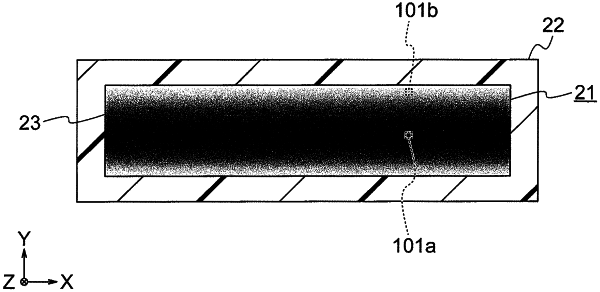| CPC B66B 7/062 (2013.01) [B66B 9/00 (2013.01); D07B 1/16 (2013.01); D07B 1/22 (2013.01); D07B 2205/205 (2013.01); D07B 2205/2096 (2013.01); D07B 2205/3003 (2013.01); D07B 2205/3007 (2013.01); D07B 2501/2007 (2013.01)] | 18 Claims |

|
1. A suspension body for an elevator, comprising:
a core having a belt-like shape and including a load bearing layer formed of an impregnation resin and a plurality of high-strength fibers; and
a covering layer covering at least a part of an outer periphery of the core,
wherein the plurality of high-strength fibers include a plurality of kinds of high-strength fibers,
wherein mixing ratios of the plurality of high-strength fibers of respective kinds in a region containing at least 10 high-strength fibers in a thickness direction and at least 10 high-strength fibers in a width direction in the load bearing layer vary between a first portion, which is a center portion of the core in a thickness direction thereof, and a second portion, which is a portion closer to an end portion of the core in the thickness direction than the first portion,
wherein the plurality of high-strength fibers include a plurality of first high-strength fibers and a plurality of second high-strength fibers, which are different in kind from the first high-strength fibers,
wherein the first high-strength fibers and the second high-strength fibers exist in a mixed state in the region in the second portion,
wherein rigidity of the first high-strength fibers is higher than rigidity of the second high-strength fibers, and
wherein the mixing ratio of the first high-strength fibers in the load bearing layer is smaller in the second portion than that in the first portion.
|